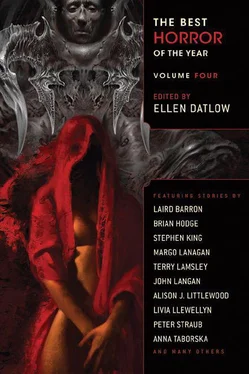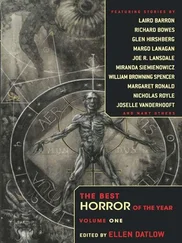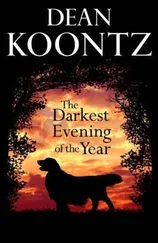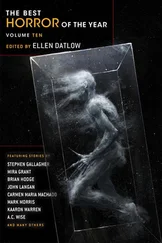It was Shae, with the wisdom of the dead, who intuited it first, with a look on her face that asked What did you do, Dylan, what did you do?
I kissed them both on their cold cheeks, and turned toward the trailer before I could turn weak, and renege on the harshest terms of the trade.
Because there’s give and there’s take. There are balances to be kept. And there’s a time in everyone’s life when we realize we’ve become what we hate the most.
I was the bringer of plague now. There could be no other way.
And though I knew it would be a blessed endeavor, they still couldn’t die fast enough.

FINAL GIRL THEORY
A. C. Wise
Everyone knows the opening sequence of Kaleidoscope . Even if they’ve never seen any other part of the movie (and they have, even if they won’t admit it), they know the opening scene. No matter what anyone tells you, it is the most famous two and a half minutes ever put on film.
The camera is focused on a man’s hand. He’s holding a small shard of green glass, no bigger than his fingernail. He tilts it, catching the light, which darts like a crazed firefly. Then, so very carefully and with loving slowness, he presses the glass into something soft and white.
The camera is so tight the viewer can’t see what he’s pushing the glass into (but they suspect). Can you imagine that moment of realization for someone who doesn’t know? Watch the opening sequence with a Kaleidoscope virgin sometime, you’ll understand. The man pushes the glass into the soft white, and moves his hand away. A bead of bright red blood appears.
As the blood threads away from the glass, the sound kicks in. Only then do most people notice its absence before and discover how unsettling silence can be. The first sound is a breath. Or is it? Kaleidophiles (yes, they really call themselves that) have worn out old copies of the film playing that split-second transition from silence to sound over and over again. They’ve stripped their throats raw arguing. Does someone catch their breath, and if so, who ?
There are varying theories, the two most popular being the man with the glass and the director. The third, of course, is that the man with the glass and the director are the same person.
Breath or no breath, the viewer slowly becomes aware they are listening to the sound of muffled sobs. At that moment of realization, as if prompted by it thus making the viewer complicit right from the start, the camera swings up wildly. We see a woman’s wide, rolling eyes, circled with too much make-up. The camera jerk-pans down to her mouth; it’s stuffed with a dirty rag.
The soundtrack comes up full force — blaring terrible horns and dissonant chords. The notes jangle one against the next. It isn’t music, it’s instruments screaming. It’s sound felt in your back teeth and at the base of your spine.
The camera zooms out, showing the woman spread-eagle and naked, tied to a massive wheel. Her skin is filled with hundreds of pieces of colored glass — red, blue, yellow, green. Her tormentor steps back; the viewer never sees his face. He rips the gag out, and spins the wheel. Thousands of firefly glints dazzle the camera.
The woman screams. The screen dissolves in a mass of spinning color, and the opening credits roll.
You know what the worst part is? The opening sequence has nothing to do with the rest of the film. It is what it is; it exists purely for its own sake.
But let’s go back to the scream. It’s important. It starts out high-pitched, classic scream queen, and devolves into something ragged, wet, and bubbling. If there was any nagging doubt left about what kind of movie Kaleidoscope really is, it’s gone. But it’s too late. Remember, the viewer is complicit; they agreed to everything that follows in that split second between silence and sound, between sob and catch of breath. They can’t turn back — not that anyone really tries.
Here’s another thing about Kaleidoscope —no one ever watches it just once; don’t let them tell you otherwise.
The opening is followed by eighty-five minutes of color-soaked, blood-drenched, action. (Except — if you’re paying attention — you know that’s a lie.)
The movie is a cult classic. It’s shown on football fields, on giant, impromptu screens made of sheets strung between goalposts. It flickers in midnight double feature theaters, lurid colors washing over men and women hunched and sweating in the dark, feet stuck to crackling floors, breathing air reeking of stale popcorn. It plays in the background, miniaturized on ghostly television screens, while burn-outs fuck at 3 a.m., lit by candles meant to disguise the scent of beer and pot.
Here’s the real secret: Kaleidoscope isn’t a movie, it’s an infection, whispered from mouth to mouth in the dark.
Hardcore fans have every line memorized (not that there are many). They know the plot back and forth (though there isn’t one of those, either). You see, that’s the beauty of Kaleidoscope , its terrible genius. It is the most famous eighty-seven and a half minutes ever committed to film (don’t ever let anyone tell you otherwise), but it doesn’t exist. If you were to creep through the film, frame by frame (and people have) you would know this is true.
Kaleidoscope exists in people’s minds. It exists in the brief, flickering space between frames. The real movie screen is the inside of their eyelids, the back of their skulls when they close their eyes and try to sleep. When the film rolls, there is action and blood, sex and drugs, and not a little touch of madness, but there are shadows, too. There are things seen from the corner of the eye, and that’s where the true movie lies. There, and in the rumors.
Jackson Mortar has heard them all. Crew members died or went missing during the shoot (or there was no crew); a movie house burned to the ground during the first screening (the doors were locked from the inside); fans have been arrested trying to recreate the movie’s most famous scenes (the very best never get caught); and, of course, the most persistent rumor of all: everything in the movie — the sex, the drugs, the violence, and yes, even the flickering shadows — is one hundred percent real.
“You know that scene in the graveyard, with Carrie, when Lance is leading the voodoo ceremony to bring Lucy back from the dead?” Kevin leans across the table, half-eaten burger forgotten in his hand.
Jackson nods. He traces the maze on the kiddie menu, and refuses to look up. Kevin is a fresh convert. Like moths to flame, somehow they always know — when it comes to Kaleidoscope , Jackson Mortar is the man. Jackson supposes that makes him part of the mythology, in a way, and he should be proud. But his stomach flips, growling around a knot of cold fries. He pushes the remains of his meal away, rescuing his soda from Kevin’s enthusiastic hand-talking.
“And you know how Carrie is writhing on the tomb, and the big snake is crawling all over her body, between her tits and between her legs, like it’s doing her, and she’s moaning and Lance is pouring blood all over her?” Kevin grins, painful-wide; Jackson can hear it, even without looking up.
“Yeah, what about it?”
“Do you think it’s real?”
Jackson finally raises his head. Sweat beads Kevin’s upper lip; his burger is disintegrating in his hand. A trace of fear ghosts behind the bravado in his eyes.
“Maybe.” Jackson keeps his tone as neutral.
Читать дальше













